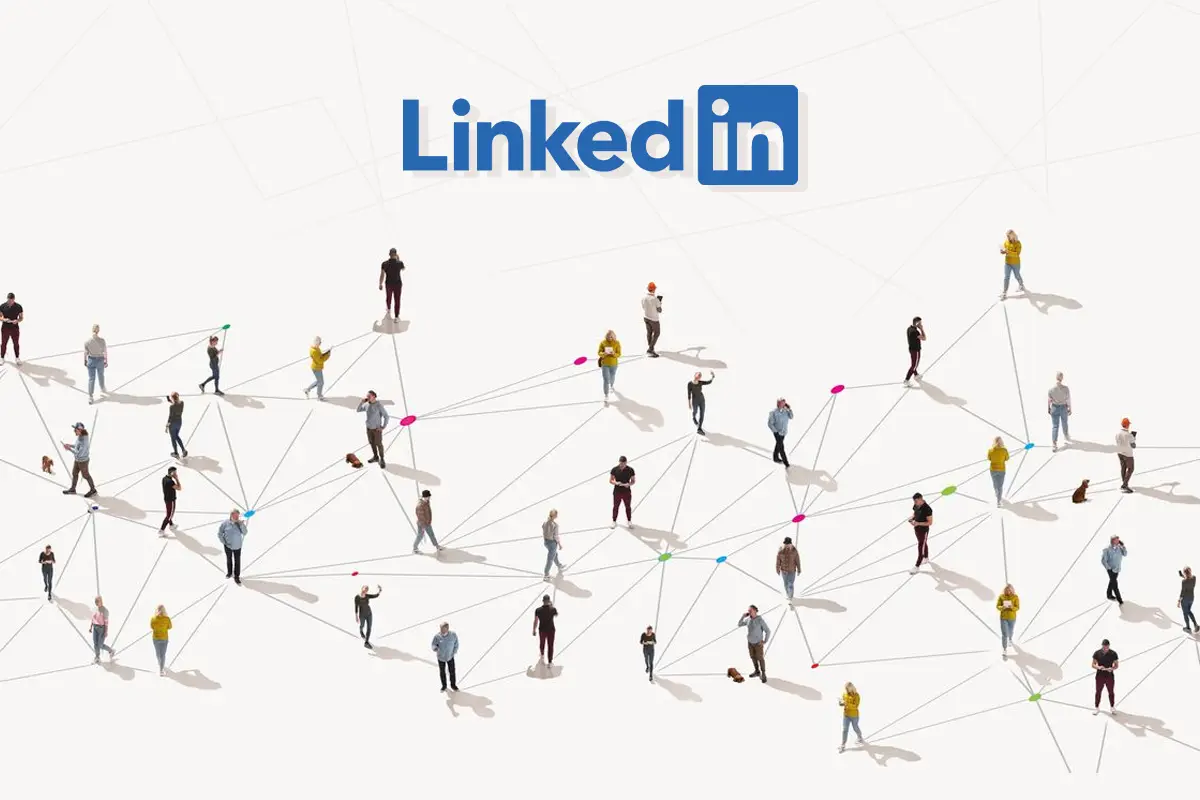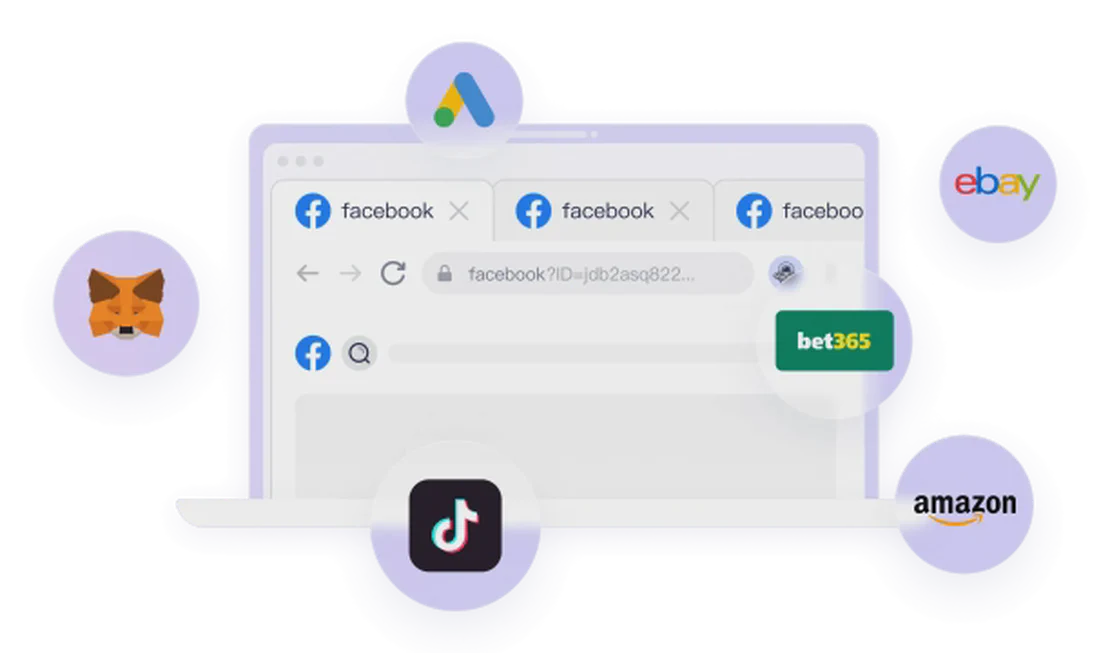In the B2B world, LinkedIn is undoubtedly the goldmine for qualified leads. But if you’ve ever tried to scale your sales efforts with just a single account, you know that this goldmine is protected by a seemingly unbreakable glass ceiling. LinkedIn’s official limits—capping outreach at just 100 new connection requests per week—create a formidable barrier for every salesperson and agency.
Behind these 100 requests lies a harsh mathematical reality. Even with an excellent acceptance rate, 20 new connections would be a successful week. Out of those 20, perhaps only 4 or 5 will engage in a conversation. Ultimately, the percentage that converts to a meeting, and then to a paying client, is minuscule. In today’s hyper-competitive landscape, relying on this “bonsai-style” of lead generation is insufficient to make a real impact. To truly ignite your sales funnel, you need a tsunami of traffic, and the only way to achieve that is through scalable operations—managing multiple LinkedIn accounts simultaneously to shatter that previously impenetrable barrier.
In this article, we’ll dive deep into a battle-tested system that helped us scale to 30+ new customers every month using multiple LinkedIn accounts. We will reveal three different levels of management methodologies, ensuring that whether you’re a solo freelancer or a 5-person team, you’ll find a solution that fits.

The Strategic Foundation: Why Multiple Accounts Are Inevitable for Scalable LinkedIn Growth
Before we dive into the technical how-to, we must reiterate the core logic behind this strategy: On LinkedIn, you need scale, not perfection.
A perfectly crafted message sent to 100 prospects may have a better conversion rate than a somewhat generic message sent to 1,000 prospects via 10 different accounts. However, the sheer volume of the latter will almost always yield more results. This is because:
- Bypass Frequency Limits: LinkedIn’s restrictions are per account. By using 10 accounts, your weekly effective reach can easily surpass 1,000, dramatically increasing the chances of your message being seen by your ideal customer.
- Mitigate Account Risk: Never put all your eggs in one basket. If your primary account gets flagged or banned due to aggressive outreach or a mistaken report, your entire business comes to a grinding halt. A multi-account strategy is a natural form of risk diversification.
- Enable A/B Testing: You can use different accounts to test various profile elements (name, headline, photo), message templates, and posting times to quickly find what works best and continuously optimize your approach.
However, managing multiple accounts isn’t simply about registering new profiles and logging into them all on the same computer. Doing so exposes all your accounts to a common enemy: association detection. LinkedIn’s algorithms can easily identify multiple accounts being operated from the same IP address, device, and browser fingerprint. Once flagged for “spammy” or “harassing” behavior, the result is a mass ban.
Therefore, every successful methodology must revolve around one core principle: Creating a separate, clean, and traceless “digital identity” for each LinkedIn account.
Method 1: The Solo Operator - The DIY Chrome Session & Proxy Approach
If you’re an individual operator on a budget who wants full control, this DIY method is your most economical starting point. Its core idea is to leverage Google Chrome’s multi-profile feature to create isolated browsing environments for each account.
Here’s the step-by-step process:
Create Multiple Sessions: In the Chrome browser, click on your user profile icon and select “Add person.” This creates a new user profile (a session). You can name each session (e.g., “Amy Lead Gen”) and choose a distinct color for visual separation.
Configure a Dedicated Proxy (Crucial Step): This is the key to preventing association. You cannot simply log into LinkedIn in these new sessions; they would still share your real IP. You need to assign a dedicated, static residential IP to each session—and thus, to each LinkedIn account.
- Find a Proxy Provider: Services like Bright Data or Private Proxy can provide high-quality proxy IPs. Bind these IPs in your account dashboard and ensure they are not flagged as datacenter IPs.
- Configure Browser Proxy: Here, we can use a powerful, free tool called Proxy SwitchyOmega. As a Chrome extension, it integrates seamlessly into each Chrome session. You simply install SwitchyOmega within the specific session for “Amy Jackson.” In that session’s extension settings, you enter the proxy server’s address, port, username, and password you purchased for her.
Verify & Log In: After configuring the proxy, open an IP-checking website (like whatismyipaddress.com) within the “Amy” session to confirm the IP matches the one you assigned. Then, log into your “Amy” LinkedIn account within this secure environment.
However, the DIY approach has significant drawbacks:
Tedious and Repetitive: Every time you add an account, you must repeat the entire “create session -> install plugin -> configure proxy” workflow. When your account count grows to 10, 20, or more, the management becomes incredibly tedious and prone to errors.
Poor for Team Collaboration: This method is highly personal and cannot be easily shared among team members. If a team member leaves, a new recruit would have to configure all environments from scratch, leading to high communication and training costs.

The Professional Underlying Solution: FlashID Fingerprint Browser
This is where FlashID fingerprint browser can act as a “supercharger” and “stabilizer” for your DIY setup. You can think of FlashID as a more professional and powerful multi-environment manager than Chrome’s native profiles.
- Built-in Fingerprint & Environment Isolation: FlashID provides more than just IP isolation; it offers comprehensive digital environment isolation. It creates a unique browser fingerprint for each of your LinkedIn accounts, including separate Canvas, WebGL, User-Agent, and plugin lists. This means, in the eyes of LinkedIn, each account appears to be operating on a completely different, untainted computer. This fundamentally eliminates the risk of being associated due to “digital fingerprint” similarities.
- Unified Management: You no longer need to manage a pile of Chrome windows and proxy configurations on your local machine. All accounts and all environments are integrated into one FlashID interface, allowing you to launch and switch with a single click. This streamlines the management process, significantly lowering the technical barrier and reducing the chance of operational mistakes.
Method 2: Team Collaboration - The Shared Environment with Session Box
When you scale from a solo operator to a team (e.g., 5 people), the weaknesses of the DIY method become glaringly obvious. You can’t afford to configure everything on every team member’s computer, and it’s impossible to ensure everyone operates flawlessly. This is where a tool called Session Box comes in.
Session Box is essentially a more powerful, team-oriented “session manager.” Its work is similar to Method 1, creating isolated browser environments, but it solves the core pain points of teamwork.
The advantages of Session Box are reflected in:
- Centralized Management: As a team leader or administrator, you can create and manage all “sessions” (i.e., isolated LinkedIn account environments) for your team in one place. When a new member joins, you just give them a Session Box account, and they can immediately access all pre-configured environments without any local installation or configuration.
- Proxy Integration: Session Box also supports configuring dedicated proxy IPs for each session, continuing the core security and isolation guarantees.
- Cost-Effective: Session Box’s monthly fee is very low (around $9/month), making it far more cost-effective for a team than paying for expensive proxy services and management software for each individual.
Extended Value of FlashID in Team Collaboration
The philosophy of FlashID can be perfectly integrated into this team workflow. Imagine your team uses Session Box, and each “session” within it runs in a completely isolated, high-fidelity browser environment provided by FlashID. This can bring significant value to your enterprise:
- Plug-and-Play Secure Onboarding: When a new employee joins, every LinkedIn account you create for them can be immediately placed in a secure, optimized environment guaranteed by FlashID. This ensures all operations are compliant and secure from the start, effectively reducing the risk of accidental bans from rookie mistakes.
- Standardized Security Protocols: All accounts within the company, regardless of owner, follow the highest standards of environmental security defined by FlashID. This standardization is crucial for building a sustainable and scalable team business.
Method 3: Fully Automated - The Ultimate Solution with Sales Robot
If you’re truly pursuing ultimate scale and efficiency (e.g., managing 90 LinkedIn accounts with just 2 people), you need to move to the third and highest level: a fully automated platform. Sales Robot is a prime example of this category of tools.
Such platforms seamlessly integrate environment isolation, proxy assignment, and sales automation workflows into an all-in-one solution.
The core value of Sales Robot lies in:
- Automated Lead Generation: You can pre-set templates for connection requests, follow-up messages, and schedules. The system will automatically send requests to your target list and, upon acceptance, execute your nurturing sequence (e.g., sending a welcome message, value content, a booking invitation, etc.). This completely replaces the tedious manual clicking.
- All-in-One Dashboard: As shown in the video, you can see the status, activity, and performance of all 90 accounts in a single dashboard. It can even have built-in proxy IP assignment. You just need to select a geographic location, and the system will automatically allocate a unique, local IP for your account, eliminating the need for you to purchase and configure proxies from a third-party service. This makes managing hundreds of accounts as simple as managing one.
- Data-Driven Decisions: Through its built-in analytics dashboard, you can clearly see the output of each employee and each account: how many requests sent, how many replies received, how many customers converted. Data allows you to accurately measure ROI and guide your next strategic moves.
Simply through this fully automated, multi-account LinkedIn outreach strategy, it’s possible to generate results like generating “nearly $200,000 in revenue in 4 weeks through one Stripe account” and “consistently acquiring 30 to 40 new customers every month from this single channel.” This is the most direct demonstration of the power of scale.
Frequently Asked Questions (FAQ)
Q: I already have a main LinkedIn account. Can I use that as part of my multi-account strategy?
A: This is strongly discouraged. Once your primary account is associated with the “auxiliary” accounts used for commercial outreach, it is very likely to be implicated, leading to suspension or reduced reach. You must use newly registered, completely separate accounts for multi-account operations. This is known as the “Clean Slate” principle.
Q: If I’m using multiple LinkedIn accounts, should the profile picture and information be exactly the same?
A: On the contrary. To minimize association risk and allow for A/B testing, the profile picture, name, headline, and bio for each account should have significant variations. For example, you can have different genders, different apparent ages, and different professional focuses. Even making minor changes to details like the background of your profile picture or the wording of your headline can increase the account’s uniqueness and lower the association risk.
Q: Besides LinkedIn, can this multi-account strategy be used elsewhere?
A: This strategy is highly versatile and applies to any platform where you need to:
- Social Media Marketing: Managing matrices of accounts on Facebook, Instagram, TikTok, Pinterest, etc.
- Affiliate Marketing: Promoting products on different affiliate platforms using different identities.
- Cross-Border E-commerce: Managing multiple stores on eBay, Amazon, etc.
- Traffic Arbitrage & Online Earning: Any online project that requires a large number of independent accounts. The core idea is always the same: creating a separate, pristine operational environment for each “digital identity.”
Q: What kind of frequency and rhythm should I follow when sending connection requests from multiple accounts?
A: This is the lifeline of multi-account operation. It’s advisable to adhere to the principle “less is more” for each account. Although LinkedIn’s limit is 100/week, it’s best to keep the actual sending volume between 50-70, spreading them out throughout the day (e.g., 10-11 AM, 2-3 PM, 8-9 PM). This mimics the behavior of a real user and appears more natural. Never send dozens of requests within an hour; that’s a high-risk operation.
Q: What kind of proxy IP should I buy for each LinkedIn account? What’s the difference between a Datacenter IP and a Residential IP?
A: For the highest pass rate, Residential IPs are strongly recommended. Datacenter IPs are generated in bulk from data centers and are easily identified by LinkedIn as proxies or VPNs, triggering risk control. Residential IPs come from real home networks and look like an ordinary user browsing from home. Their credibility is far higher than that of datacenter IPs, resulting in a much higher success rate. Private Proxy, mentioned in the video, is one of the providers of residential IPs.
Q: I want to use FlashID to manage my multiple LinkedIn accounts. Which version or feature should I choose?
A: The core function of FlashID is the fingerprint browser, which is completely sufficient for managing multiple LinkedIn accounts on the web. You can create a profile for each account, configure a dedicated proxy IP within it, and enable fingerprint isolation. This way, when you switch between different accounts in FlashID, each LinkedIn page you open is a brand new, independent digital identity. It can perfectly solve the underlying environmental problems that “Method 1” and “Method 2” rely on.
Q: How can I safely obtain multiple registered LinkedIn accounts?
A: You can purchase them through a Partner (like getAIA). From a compliance and security standpoint, the most reliable method is to register them yourself. Using tools like FlashID to create isolated environments, manually register with different emails, phone numbers, and identities. Although time-consuming, this is the best way to ensure that your accounts have a “clean birth background” and are not flagged by the platform. Buying used accounts carries an extremely high risk of being banned.
Q: If one of my LinkedIn accounts gets banned, can I create a new one with the same information and environment?
A: Absolutely not. If the same sensitive, associated information appears again under the same IP address, the new account will be instantly flagged and banned by the system. You must achieve “a fresh start with total separation”: use a new IP address, operate within a new browser fingerprint environment, and create a new account with completely new information (email, phone number).
Q: Besides Sales Robot, what other similar LinkedIn automation tools would you recommend?
A: There are indeed other similar tools on the market, such as Dux-Soup, Expandi, and Waalaxy. They all revolve around automating connection requests and message sending. Choosing which one to use requires a comprehensive evaluation based on your specific needs, budget, and security features (e.g., built-in proxies, intelligent frequency control). Many tools offer free trials, so it’s highly recommended to test them firsthand before making a purchase.
Q: For a small team, how should I choose between Method 2 (Session Box) and Method 3 (Sales Robot)?
A: This is a trade-off between “efficiency” and “budget.”
- Choose Session Box: If your team is small (2-5 people), on a tight budget, but you’ve already hit the efficiency bottleneck of manual work. In this case, using a combination of Session Box + FlashID + manual follow-up can dramatically boost your team’s collaboration efficiency and account security, offering the best value for money.
- Choose Sales Robot: If your goal is true scalability (e.g., acquiring tens of customers per month) and you want to transform sales outreach from a “manual labor” task into an “automated system.” Then, a platform like Sales Robot is worth the investment, because it’s not just a tool; it’s a proven growth methodology that can deliver exponential efficiency gains.
You May Also Like
